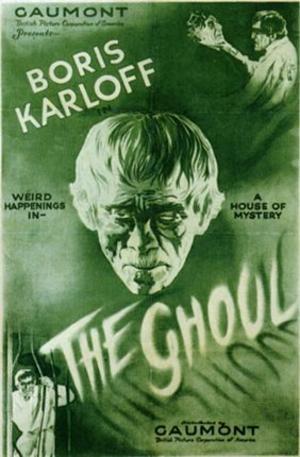In my house music has a big role in my daughter’s life-the television shows she watches, the playgroup she attends twice a week, the radio we listen to in the car when going from place to place-it would seem that a lot of children are really immersed in music. I’m this sure has a huge affect on how children learn language. I know that my daughter sings about things and knows the words to songs that she doesn’t fully understand, but that is just another avenue of learning the language. So this is what lead me to wonder what kind of role music has in the lives of those people who are learning English as their second language. Do those people find music to be useful in learning English? And if they do, what kind of music is regarded as the most useful? Do ESL students tend to listen to pop music to supplement their study? Is there any music specifically directed toward ESL learners? And what about ESL musicians? So in the following I explore the role that music takes in the lives of people around the world who are learning English as their second language.
I very quickly found a lot of information pointing to the idea that the use of music in teaching a second language is very common and regarded as an effective way to give students a better hold of the English language. According to an article written by Robert Lake, a teacher of English as a second language in various areas including Southeast Asia, Eastern Europe and the Balkans, “there does seem to be strong evidence supporting the use of music in the ESL and bi-lingual education classrooms. Language and music are closely tied together in brain processing by pitch, rhythm, and syntactical phrasing. Music familiarizes students with these connections and provides a fun and relaxing way to acquire, process, and produce English” (2002). In his article, Lake says that he used music to enhance his students’ English by playing songs over and over and then helping them decode the songs. He encouraged them to connect with the music and enjoy it before breaking it down. It seems that this connection helped his students feel more comfortable with learning English. Lake believes that it helped them feel better about learning a language that was removed from their own culture.
John F. Fanselow agrees with Lake about the importance of music in an ESL curriculum. In his article titled, “It’s Too Damn Tight” -Media in ESOL Classrooms: Structural Features in Technical/ Subtechnical English,” Fanselow argues that the classroom does not represent the real world in its attempts to bring the English language to speakers of other languages. He highlights the difference between the way we use English in a classroom, in a job setting, and in everyday conversation. He believes that the sights and sounds and feelings that are present in real life situations should be a part of learning the language. And accordingly, he believes that music is a part of this process. He states, “When music is added to speech in song, we tend to remember the material longer.” And if the material is remembered longer, it is likely more accessible to the speaker when they are trying to use it outside of the classroom setting.
A study on the use of music in a Vietnam ESL classroom agrees with the notion that music can be an important part of learning English. The study, done by Mark Huy Le, offers evidence that music is widely regarded as a useful and welcome tool for English instruction, by both teachers and students of English (Le, 1999). But even though both teachers and students value music in the study of English, it seems to be underemphasized in the classroom because of its lack of formality, Le says. The Vietnamese place a lot of stress on assessment and testing, and music doesn’t fit neatly into that aspect of ESL education.
Like the Vietnamese, Japan is a country noted for its academic rigor, and they too find music and singing useful in learning English. A study done by Atsushi Miyagi found that ESL students who used popular English songs to “note discrepancies between musical sounds and syllables in their sound test” improved their accuracy in pronunciation.
Teachers of English as a Second Language seem to use all types of music to enhance their students’ learning. According to Robert Lake’s article, he often played well known music to his students such as Bob Dylan’s “Blowin’ in the Wind” and other Oldies tunes. He also cites using the song “Turn, Turn, Turn” by The Byrds in a lesson on opposites. He specifically comments on his use of “Oldies” as a source of likeable standbys with simple concepts and intelligible lyrics. Lake also says that he used folk songs or distinctly American songs (e.g., “This Land is Your Land”) to acquaint students with American culture and traditions. In Mark Huy Le’s study, one teacher reported using karaoke, which is popular in Vietnam, as a way to integrate music into the classroom. Another teacher allows students to find a song in English and translate into Vietnamese. So there are multiple ways that music is integrated into the ESL classroom.
There is some reported resistance or at least discomfort with certain uses of music in learning English. Mark Huy Le’s study of Vietnamese students revealed that certain topics in Western music do not really relate to Vietnamese life or culture. Le states, “The themes stressing individual freedom, sexual liberation, and social hostility contradict with Vietnamese traditional songs, which stress togetherness, respect, responsibility, and social harmony,” (1999). But even though the themes are contradictory, Vietnamese people are still reportedly listening to it (especially younger people) and it is considered quite trendy. A quote from one of the subjects of Le’s study states, “Some American songs are easy to understand, some are very hard. Sometimes I feel rather funny to sing songs about wanting to make love…We dare not sing them so openly.” So it seems that the edginess of Western music captivates the young, maybe helping them indulge in a rebellious side, while still functioning as a vehicle of the English language.
While English clearly plays a significant role for people as they are learning English, it appears that it people who speak English as their secondary language have also started singing in English. In an article by Ben Shalev posted on Haaretz.com about Israeli people who sing in English instead of Hebrew, there was a reported influx of English songs between 2005 and 2007. There is some controversy over this discovery, as some believe that singing in English betrays the culture. The article even goes so far as to say that singing in Hebrew became “a statement.” Shalev points out that despite the controversy (or perhaps because of it) Israeli singers who choose to write their songs in English are attaining much success, even in their own country. Singing in English is becoming more and more of a norm for Israeli musicians, and it is becoming more widely accepted as a respectable form of musical expression within Israel.
But the attempts of ESL speakers to write lyrics in English are not always successful. One viral video widely circulated on the internet in 2009 exemplifies this fact. In this video, Sudanese rapper “Bangs” is seen singing his song, “Take U to Da Movies,” and while the lyrics are simple and sincere, the song does not really cast a positive light on the singer’s dialect. The video postings are flooded with ridiculing comments, and Bangs was even booked for a live performance, where he seems to be the butt of a joke that he is not really “in on.” As one person crudely comments on a “Mad News” page dedicated to Bangs, “I am hoping you’re just being sarcastic. He needs to be tied up in a black bag and chucked into the Thames with concrete slabs attached to him!” (2009). Harsh! Even though his foray into hip hop is widely known and has brought him considerable fame, and given that he seems to take himself very seriously, he is not really a respected singer in the industry.
So it seems that music and song has taken an inevitable place in the teaching of English as a Second Language. While it seems like most people welcome the trend, there are some instances where it is not completely appreciated. It seems that most people find that creating their own curriculum from songs we hear on the radio is more beneficial than trying to create songs specifically for English learners. And sometimes this use of music in learning the language creates what could be considered a new genre of music as musicians use English as a new way to express themselves. It seems that music is an undeniable component of becoming familiar and comfortable with learning a new language, and a great way to enjoy the language in the process.
Works Cited
Fanselow, John F. “It’s Too Damn Tight” -Media in ESOL Classrooms: Structural Features in Technical/ Subtechnical English,” TESOL Quarterly, 14.2. (1980). pp 141-156.
Lake, Robert. Enhancing Acquisition through Music.” The Journal of the Imagination in Language Learning and Teaching. Vol. 7. (2002-03).
Le, Mark Huy. The Role of Music in Second Language Learning: A Vietnamese Perspective.” Conference of the Australian Association for Research in Education. (1999).
Miyagi, Atsushi. “Purposeful Drills on English Pronunciation through Singing.” The Bulletin, The Phonetic Society of Japan. (1983).
“New Artist: Bangs-‘Take U to Da Movies’ and More…” Mad News. (2009).
Shalev, Ben. “Why do Israeli Singers Sing in English?” Haretz. (2009). http://www.haaretz.com/hasen/spages/1101731.html





